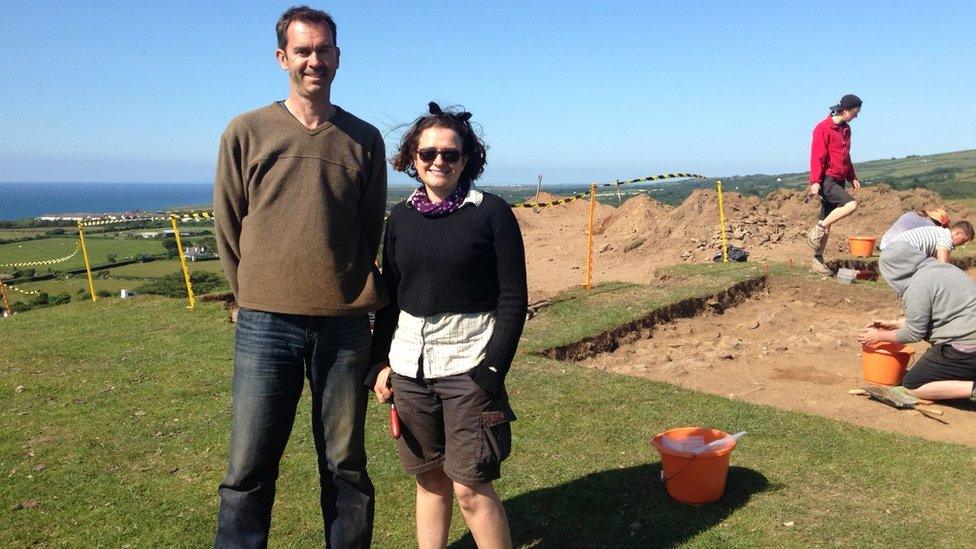Bronze Age burial dig to create 'richer picture of life and death'
- Published
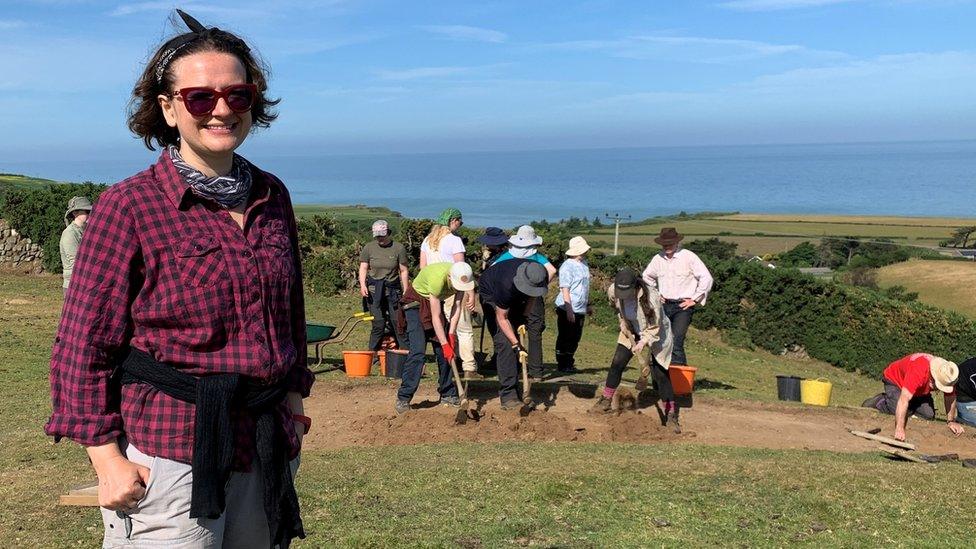
Rachel Crellin said the project would increase understanding of burials during the period
The excavation of a burial mound aiming to uncover a "much richer picture of life and death" during the Bronze Age on the Isle of Man has resumed.
The four-year project to examine the prehistoric site had been on hold for two years because of the coronavirus pandemic.
To date, the dig has unearthed the cremated remains of at least six people and the skeletal remains of another.
A 4,000-year-old jet necklace was also discovered at the site in 2019.
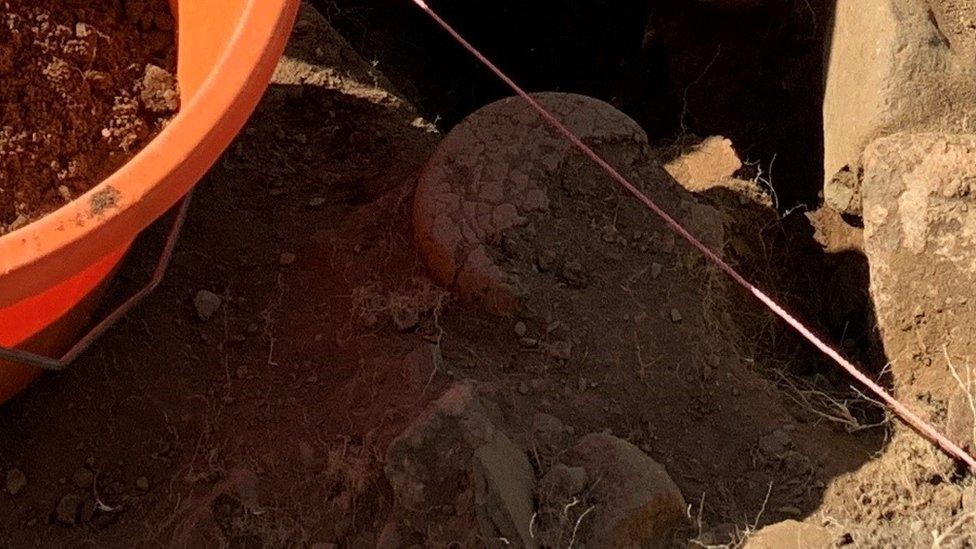
A pottery vessel which is thought could contain cremated remains has been unearthed
Supported by Manx National Heritage, the project is being led by Rachel Crellin, of the University of Leicester, alongside Chris Fowler of Newcastle University.
About 20 students from the two universities are taking part in the month-long dig on a hillside in the west of the island, near Kirk Michael, which began at the weekend.
Research for the project began in 2016, followed by annual excavations a year later, however the final year of dig had to be delayed due to the island's Covid border restrictions.
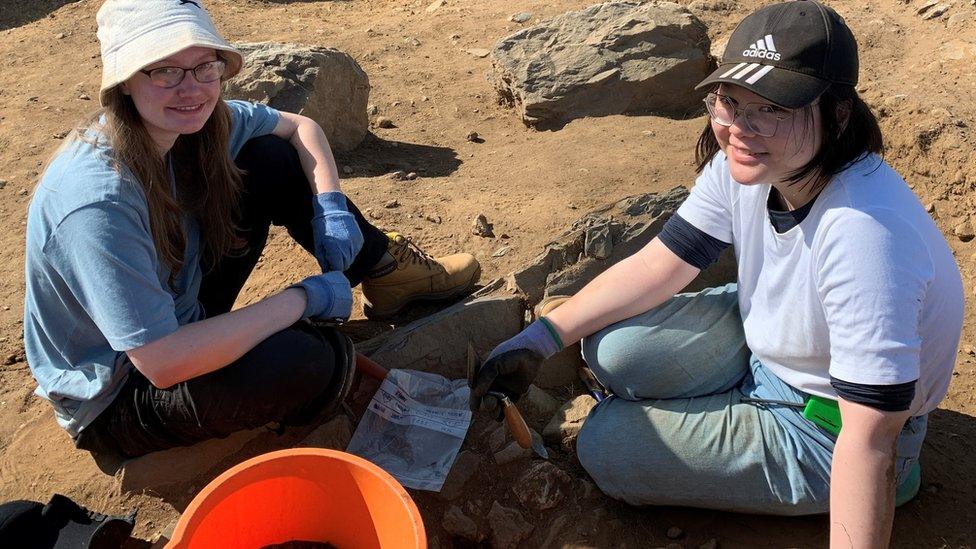
Lydia Gray and Norah Chi picked the project because they have an interest in prehistory
Dr Crellin said, while similar mounds had been explored by the antiquarians in the 1800s and early 1900s, those excavations had been limited and would often "hit one or maybe two burials".
She said: "They were missing the fact that other people get added to these sites again and again and again."
The complete excavation of the mound was allowing the team to find "all of the people who got added over probably the course of hundreds of years", she added.
"And in addition the modern scientific techniques that we can bring to it all that kind of stuff gives us a much richer picture of life and death in the Bronze Age than we've ever had for the island," she continued.
"And that's really exciting."
Significant material found during the project will be stored at the Manx Museum in Douglas.

Why not follow BBC Isle of Man on Facebook, external and Twitter, external? You can also send story ideas to IsleofMan@bbc.co.uk, external
- Published22 July 2019
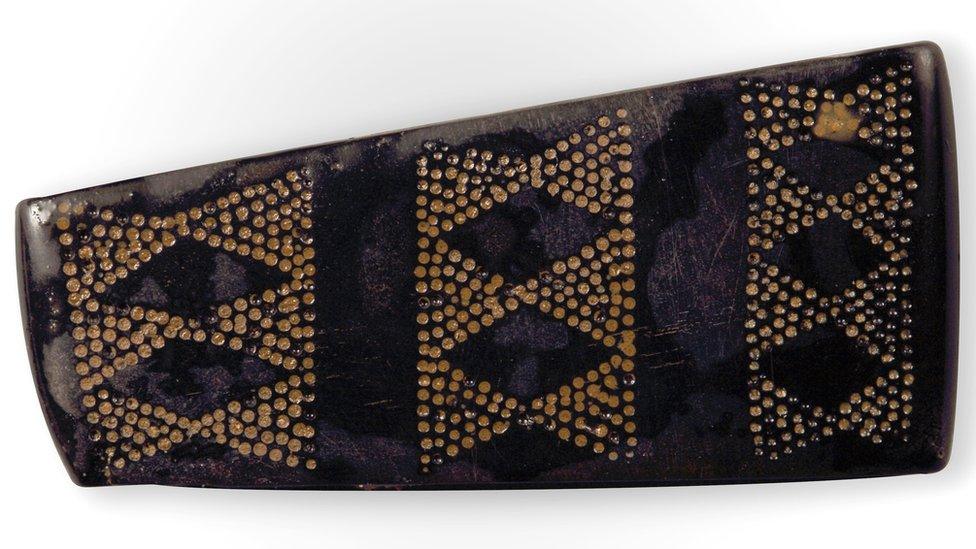
- Published28 June 2019
